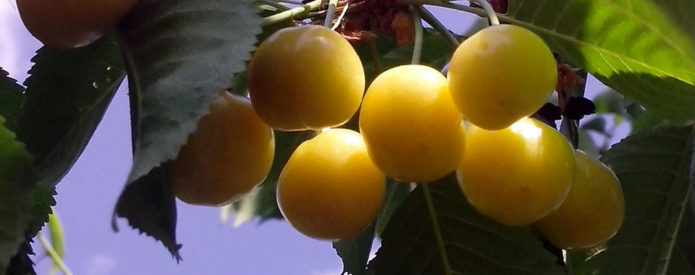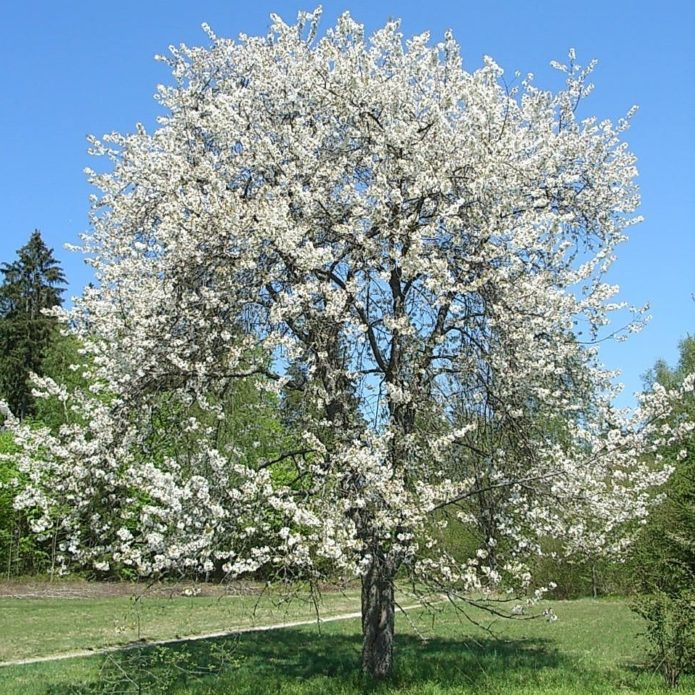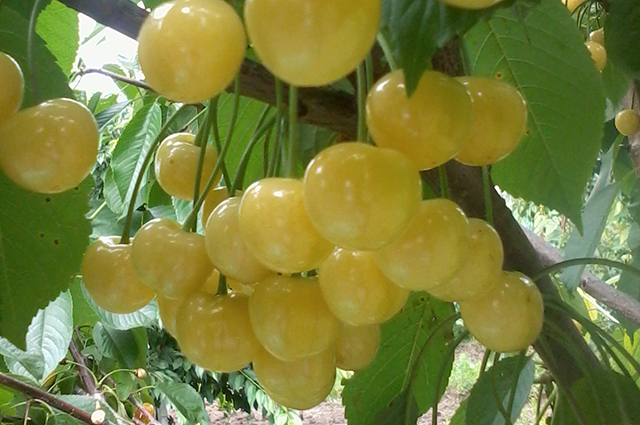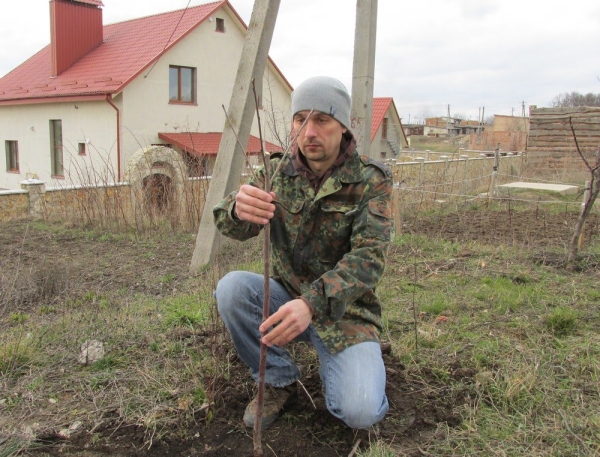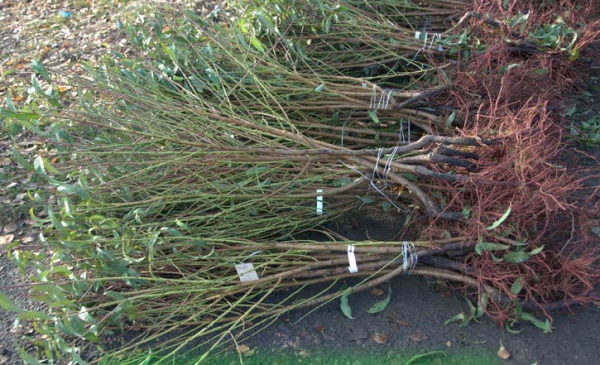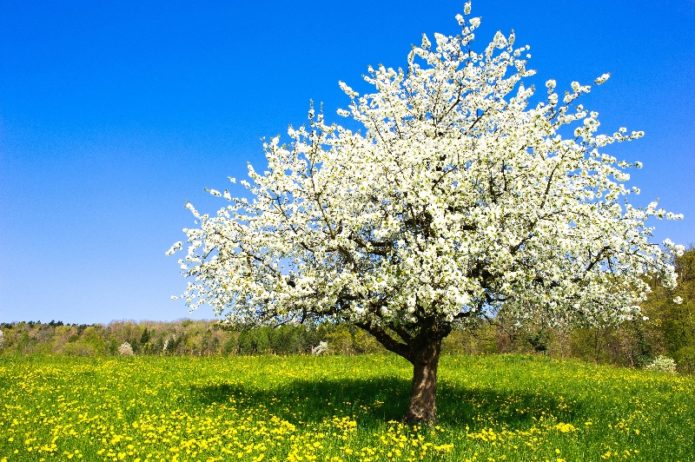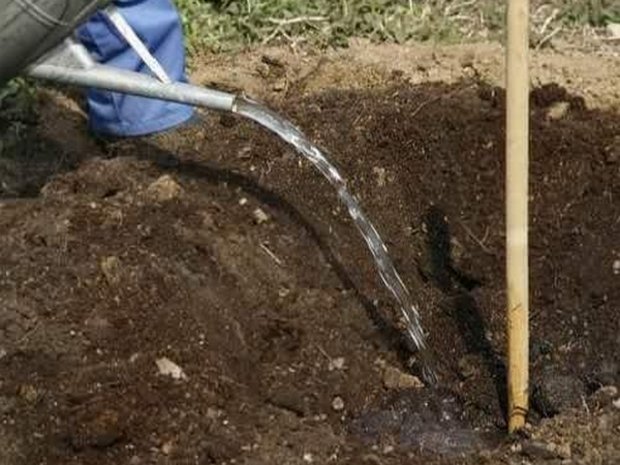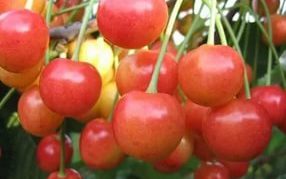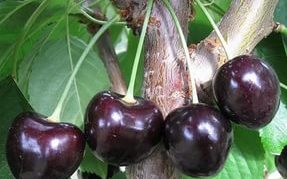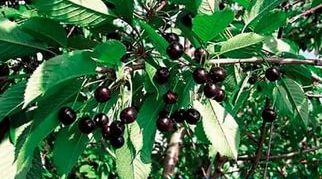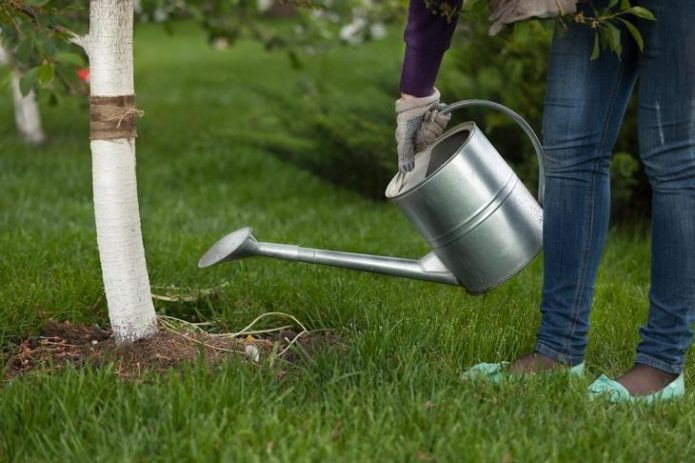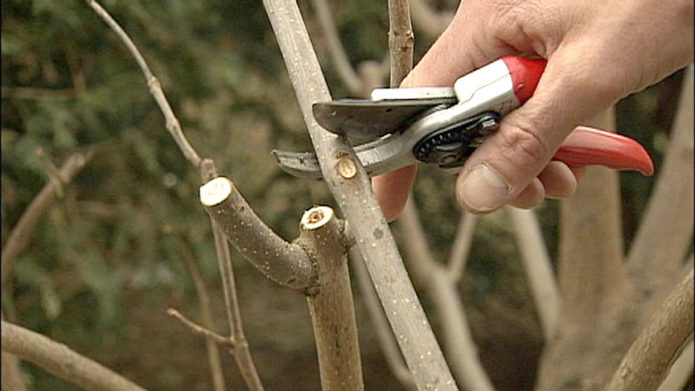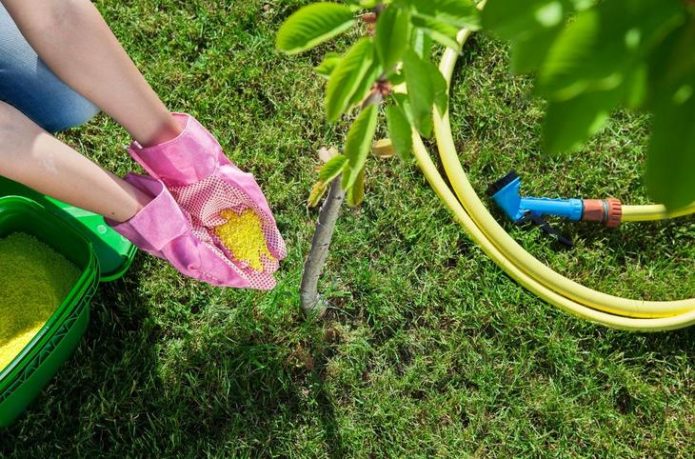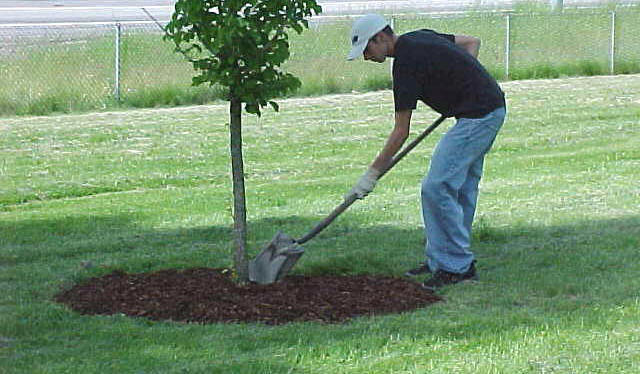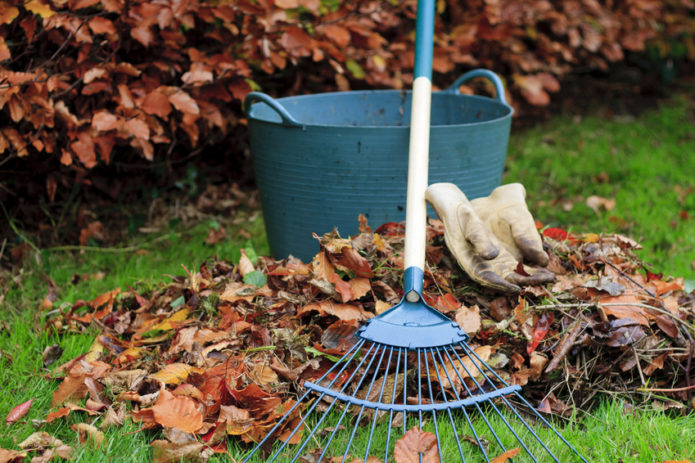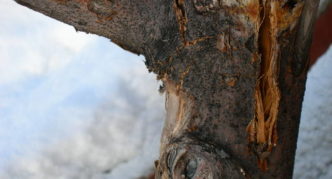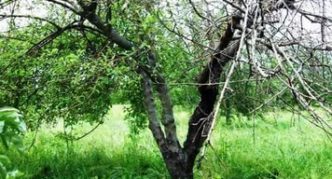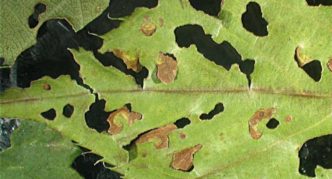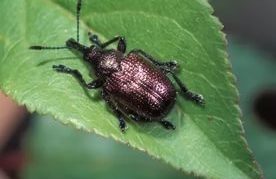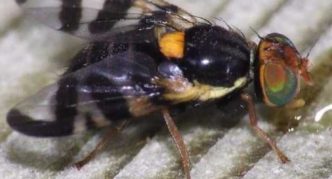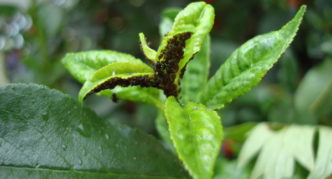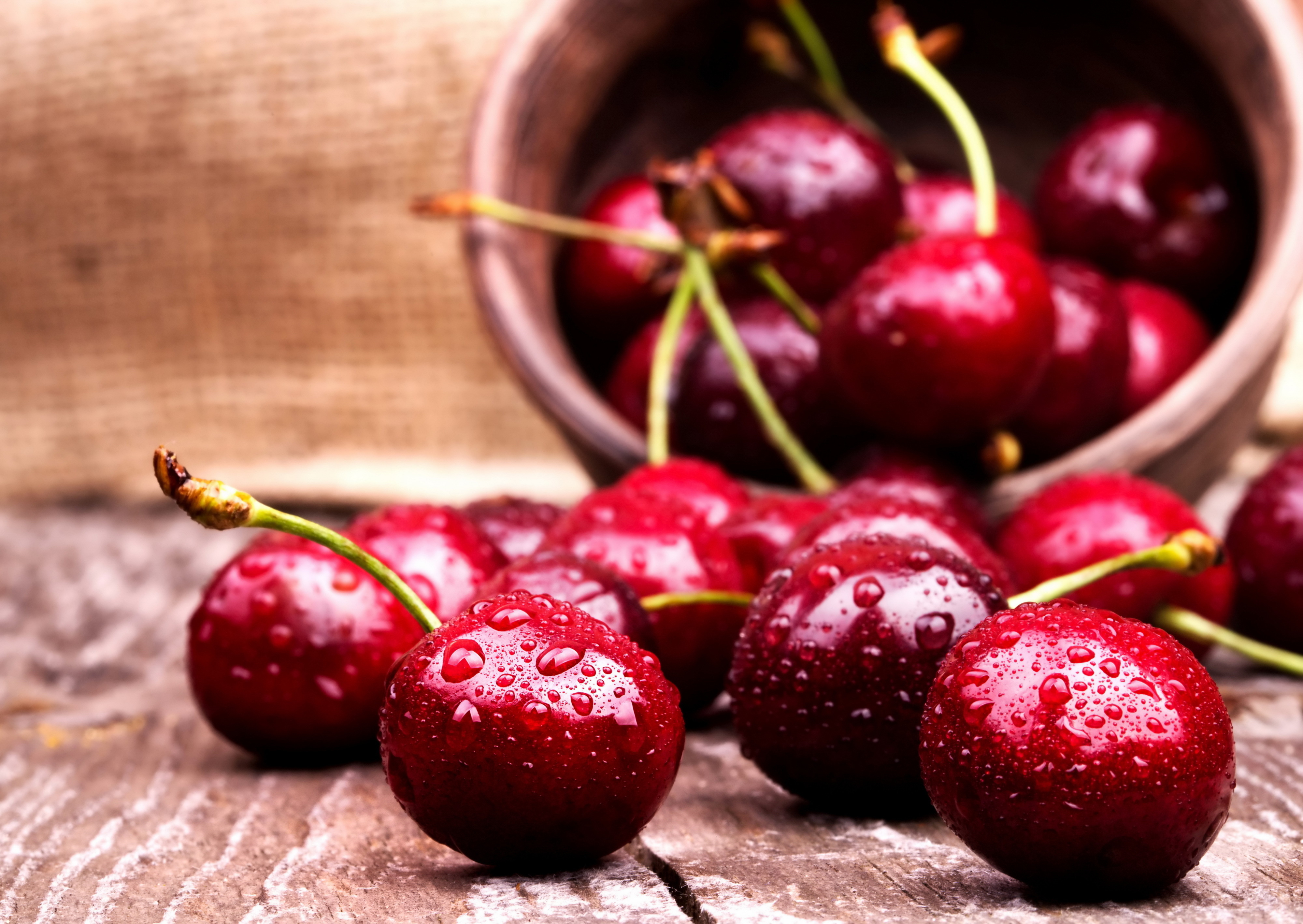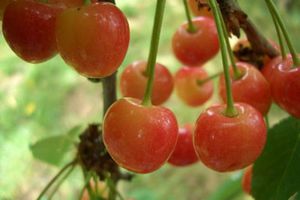Many gardeners strive to acquire yellow cherries in their paradise. And, it turns out, not in vain. Yellow-fruited cherry varieties are not as capricious as their red-sided counterparts. Fruits of yellow color steadily tolerate an abundance of rains - they do not crack or rot, and the berry does not suffer from birds. And to understand the abundance of varieties, we will give an example of Chermashnaya cherry. But before planting, be sure to find out about the characteristics of the tree.
Content
History and description of the cherry variety Chermashnaya
Cherry is considered a thermophilic tree that grows exclusively in the south. But gardeners from cooler regions also want to acquire fruitful trees with juicy fruits. This is what scientists are working on.
Thanks to the efforts of breeders, a new sweet cherry variety called Chermashnaya was born. In 2004, it was entered in the State Register for the Central Region. The authors of the successful novelty were A.I. Evstratov, H.K. Enikeev and N.G. Morozov. And the Leningradskaya Yellow variety was chosen as the parent form. It was the experiment with sowing his freely pollinated seeds that ended in success.
Basically, cherries are large-sized, belonging to the trees of the first size. But the variety Chermashnaya has moderate sizes that are quite acceptable for planting in the garden. The height of a rapidly growing tree reaches 4–5 m. The branches forming the base branch off from the trunk at an acute or obtuse angle. Brown-brown and smooth shoots grow straight. The slightly raised crown resembles a rounded oval in shape, not very thickened.
Leaves are smooth, shiny, green. Medium in size. The shape is lanceolate or oval, long-pointed. The edges of the plate are decorated with medium-sized file-like teeth.
White flowers appear shortly before the leaves open. Fruit ovary is formed on shortened shoots and bouquet branches.
Rounded fruits weigh 4.4 g on average. The yellow color predominates in the integumentary and main colors. But a slight pinkish blush sometimes adorns the surface of some berries. The pulp is quite dense, while tender, juicy. The taste is sweet and sour, but it should be noted that the sweetness is still more pronounced. Cherry Chermashnaya is a dessert variety, it is estimated at 4.4 points.
The stone is smooth, round, of medium size.It separates from the pulp very well (this feature is useful for those who like to work with blanks).
Characteristic
- The variety enters the fruiting period for 4–5 years.
- The fruits ripen early. You can get pleasure from sweet ripe fruits already at the end of June.
- With an average size of berries, Chermashnaya takes them in number. The yield is very good and increases with age. On young 7-year-old trees, up to 12 kg of juicy fruits ripen. Adult specimens show great generosity - 30 kg per tree. The average annual yield can be up to 85.2 c / ha.
- Chermashnaya is self-fertile, therefore it needs other varieties for cross-pollination.
- Winter hardiness in flower buds is at an average level. But the overall level of winter hardiness fits well with the climatic conditions of the Central region and the Moscow region. When the temperature drops below -200C, the trees showed good stability.
- The variety is resistant to the main fungal diseases of sweet cherry - moniliosis and coccomycosis. It is rarely affected by pests, but in hot periods damage from leaf-eating pests is possible.
Advantages and disadvantages - table
| Advantages | disadvantages |
| Early maturity | Self-infertility of the variety |
| Early ripening and dessert taste | Short storage |
| High yield | |
| Excellent winter hardiness | |
| Disease resistance (moniliosis, coccomycosis) |
Landing features
An experienced gardener knows that a correct planting is the key to the normal development of the tree. And for a person who is just mastering the basics of gardening, before laying a garden, you need to find out the features of this process.
When to plant - in spring or autumn
From what time the planting took place, it depends how quickly and without problems the young tree will take root.
To begin with, let's figure out the weather conditions of the region in which the Chermashnaya cherry is zoned. The climate is temperate continental, winters are moderately cold, but snowy enough, summers are warm and moderately humid. In such conditions, both spring and autumn planting is permissible.
Spring planting should be carried out in a relatively short time - from the moment the snow cover melts to the beginning of sap flow in the seedling. The end of April and the first week of May are the optimal dates. The trees planted during this period will have time to acquire a root system during the growing season, and the coming winter will not pose a threat to them.
Autumn also should not be delayed. You need to land Chermashnaya no later than the end of October. The seedlings immersed in the dormant period will have enough time before the onset of frost to take root in a new place.
Experienced gardeners prefer the autumn planting. Warm, but rather humid weather will save time and effort, since watering the tree will only be enough once. And nature will take care of the rest.
Sapling selection
The right choice largely determines how healthy the tree will be and whether it can reach its potential.
Young trees 1 or 2 years old show the best survival rates. You can determine how healthy a seedling is by the following criteria:
- The root system is elastic, without swelling and other damage. The cut should be white, brown indicates that the root tissue has died. The length of a well-developed root system is not less than 30–35 cm, the number of main branches covered with a mesh of absorbent roots is 3 or 4.
- The stem is straight, the bark is elastic, there are no signs of damage or disease.
- A two-year-old seedling should have a straight center conductor and 3-4 well-developed skeletal branches.
The best place to buy is garden centers or nurseries. They sell zoned plants, and they won't deceive you with the variety.
Planting site, what kind of soil does the variety prefer
Sweet cherry is to some extent a sissy, she does not like strong winds. Therefore, before planting Chermashnaya, select a cozy corner, illuminated by the sun throughout the day. It is sunlight that increases the sugars in the berries. It is not bad if the landing on the north side is protected by a structure or a fence.
It is not worth planting cherries in pits and lowlands. Cold air accumulating there can harm early flowering trees. The root system of Chermashnaya is also sensitive to the level of groundwater. Subsoil water is permissible no closer than 2 m to the planting surface.
In relation to soils, sweet cherry prefers fertile, light texture and well-drained soils. The best fit for planting is medium loamy and sandy loamy soils with neutral acidity.
Soils containing a large amount of peat are highly acidic. Heavy clay soils are too cold and wet. These qualities are not suitable for growing cherries, but if there are no other options, then with a little work, you can give these soils the required characteristics. To do this, peat bogs are drained using drainage ditches, a large amount of sand is brought in for digging and lime. Clay is diluted with peat, sand and vermiculite.
Preparing the soil and planting pit
Before planting a plant, you need to prepare the selected area. If necessary, it is leveled, stones, remains of vegetation, roots of perennial grasses are removed. To increase fertility, a year before planting, the site is sown with green manure, which is then dug up along with the ground. Instead of vegetation, you can add 2 buckets of organic matter for each m2.
The planting hole is usually dug out in advance. This is necessary so that the soil is structured and the nutrients are evenly dissolved in it. For spring planting, you need to prepare a pit in the fall, for autumn planting - no later than 1 month before the intended action.
- On the surface of the earth, mark the boundaries of the future depression 1 m in diameter, 70 cm deep.
- Set the selected top fertile layer to one side, and the soil from the lower level to the other.
- Add to the top soil:
- well-rotted manure - 2-3 buckets;
- potash fertilizers - 100 g;
- phosphorus-containing - 200 gr;
- wood ash - 1 l.
- Drive a straight stick into the bottom of the hole, add a well-mixed potting mix and pour 1 bucket of water.
A dug-in stick will serve not only as a support for the seedling. It will become a reference point for the prepared pit.
Step-by-step landing
- Before planting, carefully inspect the roots, if they are dry, put them in a bucket of water.
- At this time, remove the soil from the pit, and arrange the rest at the bottom in the form of a hill.
- Place the seedling in the center of the pit, spreading the roots along the sides of the embankment.
- Holding the trunk with one hand, fill the removed soil back. In the process, you can slightly shake the tree so that the earth is evenly distributed between the roots.
- After that, lightly compact the soil, tie the seedling to a support and form a circle for watering, decorating its edges with an earthen roller.
- Pour 2 buckets of water alternately.
After planting, the root collar must necessarily remain at a height of 3–6 cm from the soil surface.
Planting cherries: video
Neighborhood with other trees
Taking into account the size of the cherry, the nearest tree should be planted no closer than 3-4 m in a row, the aisles should be even more spacious - 5 m.
Pollinators for the Chermashnaya variety
Chermashnaya is a self-fertile variety, so at least one cherry tree should be planted nearby for pollination. But not every strain is suitable for this role. It is necessary that the neighboring tree blooms at the same time as our variety. The best pollinators are the cherries Fatezh, Bryanskaya pink, Leningradskaya black, Iput and Crimean. Duke Shokoladnitsa will also do.
Photo gallery: the best cherry pollinators Chermashnaya
- Cherry variety Fatezh has large reddish-yellow fruits
- Cherry variety Bryanskaya pink bears fruit with pink-yellow elastic berries
- The fruits of the Leningrad black cherry have a thick dark color and sweet taste.
- Cherry variety Iput has large fruits of almost black color.
- Cherry variety Krymskaya is distinguished by dark red rounded fruits
Care
Proper and consistent care will help the tree live a long life and give the caring gardener a generous harvest every year.
Watering
Sweet cherry is a moisture-loving tree. But at the same time, it does not tolerate stagnation of water in the roots, therefore, after the rain, even if the next watering is scheduled, it is not worth moistening the ground. Taking into account the climatic conditions of the Central region of Russia, it is necessary to water an adult tree 3 times per season:
- at the beginning of the growing season, when the buds swell;
- 15 days after the tree has bloomed;
- 2-3 weeks before the fruit is fully ripe.
We must not forget about pre-winter watering. But it is produced only if autumn is stingy with rains.
Young trees planted in spring need a special irrigation regime. In order for the seedling to quickly grow the root system, the soil under it must be moderately moist. This can be achieved by making up to 2 waterings per month.
The liquid consumption rate for an adult tree is 50-60 liters. Before moistening, it is necessary to slightly loosen the soil in the irrigation wheel. It is important that the depth to which water penetrates into the soil is at least 50 cm.
Pruning
Cherry, which is characterized by rapid growth, but weak shoot formation, needs to form a crown from an early age. A sparse tiered form is preferred.
- In the first spring, a bole with a height of 50-60 cm is formed at a two-year tree. The shoots growing below are removed completely. Among the branches growing higher, you need to choose the 3 or 4 most developed ones and shorten them by half the length. The central conductor is cut so that it rises above the first tier by 15 cm. All others growing inward and weak shoots are cut off without leaving a hemp.
- In the second year, the next tier is laid. It will be located 50–70 cm higher than the first. The number of skeletal branches is reduced to 2–3. They are aligned in length, the central conductor is again left 15 cm above the second tier.
- The third year completes the formation of the crown. The center conductor is brought out to the side branch, thereby taking control of the height of the tree.
Formation of undersized cherries: video
And then pruning is of a slightly different nature and has different purposes:
- Thinning. Helps the tree avoid thickening. Promotes increased yield, maintains cherry health, and controls height. All competing branches rubbing against one another, spinning tops, thin, undeveloped shoots are cut out. Held in early spring.
- Sanitary. Sick or broken branches are subject to removal. It is carried out as needed.
- Anti-aging. This type of pruning helps the old tree regain growth and, accordingly, increase fruiting.
A few tips for pruning:
- Use only sharp garden tools. Disinfect it after each cut to avoid the spread of possible infections.
- Never remove too many branches at one time. This can come as a shock to the tree.
- Try to cover each cut with a garden pitch.
Top dressing
Fertilizers placed in the planting pit will last for 2-3 years. Further, top dressing must be applied annually. But young and fruiting trees are fed in different ways. For a seedling, the main task is to grow strong, healthy and prepare for fruiting. For fruit bearing trees: produce the highest quality and most abundant crop possible.
Fertilization under young trees - table
| Period | Fertilizer and rate | Method of application |
| In May | 20 g of urea per 1 m2. | For digging. |
| In June | Dissolving in 10 liters of water, applied after watering. |
Fertilization under fruit-bearing trees - table
| Season | Fertilizers and rate | Method of application |
| Spring | 150 gr of urea under the tree. | Grooves are dug along the perimeter of the crown depth of 25 cm, fertilize and water. |
| Beginning of autumn | 300 gr superphosphate and 100 g of sulfuric potassium. | Digging to a depth of 15 cm. Closer to the trunk the digging depth is reduced so as not to harm the roots. |
| Late autumn | Wood ash - 0.5 l and organic matter (compost, manure) - up to 40 kg. | For digging. They bring in poor soils annually, in fertile - once every 2-3 years. |
Depending on the level of acidity of the soil, 400 to 800 grams of lime is added. This procedure needs to be carried out only once every 5 years. Brought in in the fall for digging. The introduction of lime cannot be combined with nitrogen fertilizers, superphosphate and organic matter.
What other care is needed for Chermashnaya
- Sweet cherry is a tree that loves cleanliness, so the trunk circle must be kept clean. Periodic weeding will help support the plant's demands.
- After rain or watering, as soon as the top layer of the earth dries up, light loosening is necessary. It will help to establish gas exchange in the roots and retain moisture in the soil.
- Don't forget about mulching. Putting a layer of hay, dried grass or dry foliage in the tree circle will prevent the rapid appearance of weeds and also retain moisture.
- Whitewashing the trunks saves from burns by the bright spring sun and winter frosts. The composition can be purchased at the store, or you can make it yourself. This will require the simplest ingredients:
- 2 kg of freshly slaked lime;
- 1 tbsp. l. carbolic acid;
- 300 grams of copper sulfate;
- add the components to 10 liters of water, mix well and start applying. The composition covers trunks and skeletal branches.
Preparing for winter
- The trunk circle is freed from fallen leaves.
- They introduce the necessary fertilizers and dig up the soil.
- Produce pre-winter watering as needed.
- They clean the trunks from old bark, close up cracks, whitewash.
Young trees must be insulated for the first 3-4 years, wrapping the trunks with any breathable material - burlap, cardboard, paper, agrofibre. Young wood is especially sensitive in places open to the wind. A thick layer of mulch protects the root zone. The trunks are insulated after the first snow, when the plant has dropped its leaves.
For mature trees, it is important first of all to protect the trunk circle. The trunk does not need to be insulated, but protection from rodents is required. The easiest way is to tie the trunk with spruce branches, so that the needles are pointing down.
Diseases and pests
Cherry Chermashnaya is highly resistant to fungal diseases, in particular, moniliosis and coccomycosis. But nature sometimes presents unpleasant surprises, which, combined with improper care, can become favorable conditions for a viral or fungal infection. And the pests attack the weakened tree immediately.
Diseases and pests - table
| Diseases and pests | Symptoms | Control measures | Prevention |
| Cystoporosis | The tree, actively blooming in spring, dries out rapidly, starting from individual branches. Leaves curl and fall off. Dark spots and cracks appear on the bark, from which gum flows. |
|
|
| Bacteriosis | First of all, young trees from 3 to 8 years old suffer from the disease.On leaves and fruits, spots of brown or black appear with a yellow border. The branches become covered with ulcers, from which the resin flows. The leaves begin to fall off. The wood dies off, the tree dies. | There is no cure. The affected tree is uprooted and burned. |
|
| Clasterosporium disease | In spring, it appears as small brown spots with a crimson or dark red border. Flowers, buds, leaves, branches are affected. The affected tissue on the leaves dies off, through holes appear. The kidneys turn black. Round ulcers form on the branches. Fruits are deformed during growth. The disease severely weakens the tree, leading to a reduction in yield. |
| The branches affected by the disease are cut and burned. The same is done with leaves. Places of cuts are treated with garden pitch. In the spring, the crown is thinned out carry out sanitary pruning. |
| Weevil | Buds, ovaries and flowers are affected by the pest. With a massive defeat, you can lose the entire crop. And because of the death of the leaves, the young tree is most likely doomed to death. | After flowering and after a week, spray with Intavir or Karbofos. Fufanon, Aktellik, Rovikurt are also effective. | Carry out the autumn digging in the trunk circle. In the spring, shake the beetles off on a light-colored cloth spread under the tree. Remove old, flaky bark from trunks. Collect and destroy carrion during the ripening period. |
| Cherry fly | This insect can spoil up to 90% of the crop. The main harm is caused by the larvae, which feed on the pulp. The damaged berry is not able to be stored, it quickly rots. | At the end of May, when the flies start flying, and 2 weeks later, treat the trees with Confidor, Calypso or Aktellik. To achieve the maximum effect, the proposed means must be alternated. | Dig up the soil under the crown in autumn. Collect and destroy the carrion. Do not leave damaged fruits on the tree. |
| Cherry aphid | A colony of small insects appears on young shoots and the back of leaves. The pest feeds on cellular juice, weakening the cherries. A sooty fungus can settle on the remaining sticky coating. | Inta-Virom or Iskra (1 tablet per 10 liters of water) spray the cherries when aphids are found. The final treatment should be carried out no later than 20 days before harvest. | Fight root growth and weeds. Dig up the trunk circle in the fall. In case of minor damage, prepare an ash broth (pour 0.5 kg of ash with boiling water so that the ash is completely covered, boil for 20 minutes. Cool, strain and dilute with water to a volume of 10 liters). Sprinkle the cherries. |
Photo gallery of possible diseases and pests
- Cystoporosis leads to cracks in the cherry bark
- Bacteriosis is a very terrible disease, often causing the death of a tree.
- Clasterosporium disease turns leaves into a sieve
- If you don't fight the weevil, you can forget about the harvest
- The cherry fly lays many larvae that can damage up to 90% of the cherry crop
- Aphids weakens cherries, making them vulnerable to disease
Harvesting
It is necessary to start collecting cherries Chermashnaya when the berries are fully ripe and filled with sweet juice, but the stalk is still green. It would seem that picking cherries from a branch is easy. But not everything is so simple. It turns out that if you pull the stalk inaccurately, you can easily break off the bouquet twig. It will not grow in the same place, which means that the number of berries for the next year will decrease.
You need to start harvesting only in dry weather. Cherry is a very delicate berry, and if you pick it wet, it will quickly start to deteriorate. Fruits with tails are stored a little longer.But it's better not to pull the stalk. You can carefully pinch off berry by berry from the main bundle, it is best to use scissors, it is safer and faster. Cherries must be sorted out, preventing damaged fruits from reaching the bulk. They are placed in containers of small volumes - up to 5 kg.
Cherry Chermashnaya belongs to dessert varieties. It is distinguished by its thin skin and tender juicy pulp. Such a berry is unsuitable for long-term storage. Transportation over long distances is also not desirable. To properly prepare fruits for short-term storage, they need to be cooled for a day or two at a temperature of 6-80C. In this way, you will avoid rapid mold growth. Chilled fruits sprinkled in a thin layer should be stored at -10C and humidity 80–90%.
Chermashnaya berries, healthy and tasty, are best consumed fresh. They can also be incorporated into fruit salads or garnished with desserts. The fruits are not very suitable for making jam, but the compotes and cherries in their own juice are excellent.
Reviews about cherry Chermashnaya
... But the birds do not touch Chermashnaya, half of the berries are ripe, tasty, but not honey (although it’s probably too early). But the size of the berries is smaller than that of Iput.
Today the first harvest of Chermashnaya cherries was harvested. Delicious. They ate it.
I have two cherries: Chermashnaya and Leningradskaya. This year was the first harvest. A bit, but still nice. Chermashnuyu treating frostbites.
Chermashnaya is an early cherry with very juicy and tasty berries, perfect for regions with a continental climate. Gardeners respect this variety for its abundant yield and unpretentiousness. In addition, this cherry has a high frost resistance and strong immunity, which greatly facilitates care. And you can enjoy the wonderful tender berries already at the beginning of summer, or rather, in June.
